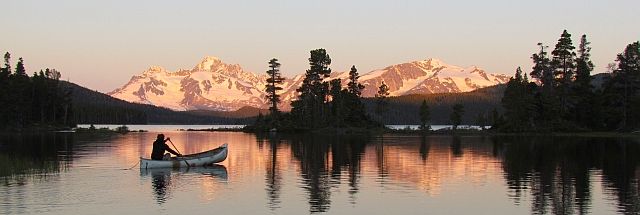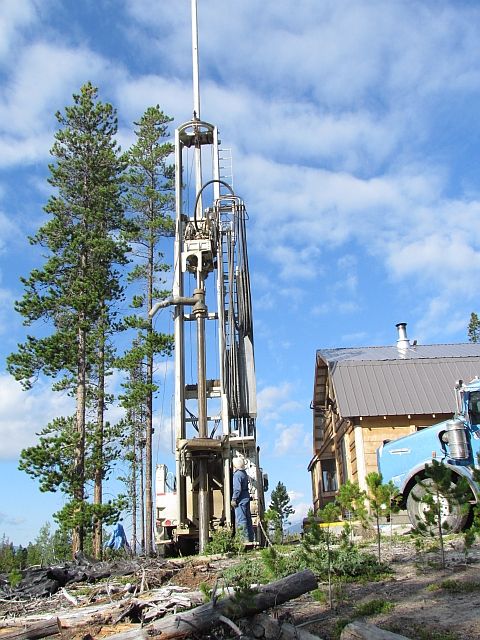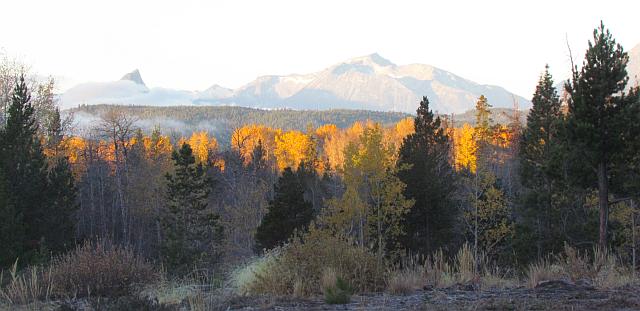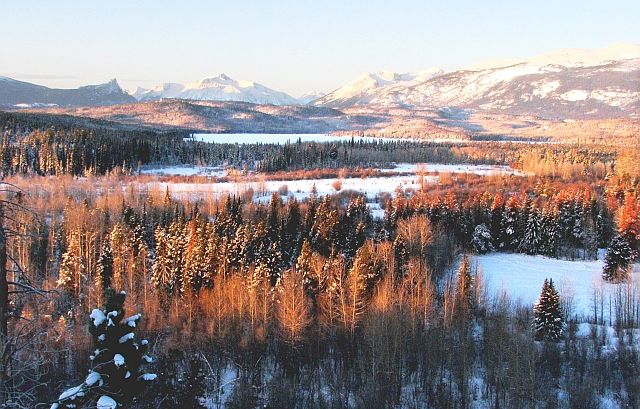
The big news is that I sold Nuk Tessli. The new owner is an Israeli. He was actually one of the first people to inquire about the business when I listed it 3 years ago: he even came to visit Nuk Tessli then. But he said it was too much money, and too big a job to make it the way he wanted it. But he kept in touch. The other 30 or so inquiries went nowhere: either the prospective buyers were totally out of their league (from a practical point of view as well as budget) or were put off because the business was tied to a government lease with no possibility of being able to buy the land in the future. (There was one offer from a Greek with a British address, whose English was barely recognisable, who wanted to pay me anything I wanted immediately, without looking at the place. It soon became obvious that it was an attempt at money laundering! Apparently this is not uncommon.)
Doron Erel was the first Israeli to climb Everest and the first to go to Antarctica. He has guided for years in the Himalayas, European Alps, and Alaska. For many years he had been looking for a home base for his business. Even when he turned it down, he said that Nuk Tessli was the most beautiful place he had seen.
At first he offered about a third of the asking price. Gradually he was persuaded to come up. I was so desperate for money and for the freedom I would get once the business was off my hands, that I finally gave in and accepted about 2/3 of the original asking price. We decided on an agreement before Christmas 2011, but all the government red tape, including a two-month long First Nations review, was not completed until April.
I had agreed to be at Nuk Tessli for various clients, so flew in at the end of June and had about 10 days with a friend before Doron arrived. It was strange seeing his plane come in, knowing that Nuk Tessli was no longer “mine.” But on the whole it was a fun summer. Doron is charismatic, and I enjoyed all the young Israelis and family he brought with him. Doron plans to add a few luxuries: the first thing he installed was Wifi so that every morning, half a dozen people clustered around my cabin (the signal did not stretch very far beyond it) to phone, text or email friends and family in Israel. Up to that point, Israel had never particularly interested me as a travel destination, but I now realize that it is a fascinating country geographically and botanically. It is also a birder’s paradise; birds migrating from Europe to Africa do not like to cross the Mediterranean so they squeeze by over Israel. Doron brought me a plant book: it is all in Hebrew except for the Latin names so I can’t read much of it, but the plant families are known to me (and many of the species: probably a lot have been brought in with European farming methods) and the distribution maps, and knowledge of what the plant requires, give me a pretty good idea of the climate. I had no idea that there was such a lot of green country in Israel. The alpines are clustered in the very northernmost point where there is a high mountain shared with northern neighbours. If they are lucky, Israelis can ski there for about 10 days each winter!
Before I went to Nuk Tessli, I already spent a good whack of the purchase money on repairs for the van, and a “new” pickup. The van was getting pretty beaten up carrying firewood, manure and rocks, and I wanted to keep it for the book tours. The first mechanic charged several thousand but did the job so badly I spent another $2,000 with another mechanic. And now that winter has arrived I find the all-wheel- drive, which was also supposed to have been fixed, is still not working properly. It is very hard to find a vehicle with the van’s capacity that is also awd or 4 x 4, which is why I want to hang onto it.
 When I got out of the mountains (a month earlier than usual) I spent another big whack of money on having a well drilled. I had done my own witching, with rods made from fencing wire, but had not got a very strong signal. However, there was no other reaction on the property (and the surface water in the ponds was too swampy and contaminated to use; besides, it dries up some years.)
When I got out of the mountains (a month earlier than usual) I spent another big whack of money on having a well drilled. I had done my own witching, with rods made from fencing wire, but had not got a very strong signal. However, there was no other reaction on the property (and the surface water in the ponds was too swampy and contaminated to use; besides, it dries up some years.)
It was an exciting day when the drillers arrived. Without delay, they set up their big rig and started boring into the ground. At first the silt and gravel was soft. Three 20-foot pipe-lengths down, they hit harder stuff and slowed down. The pipes had to be laboriously raised and uncoupled and the bit changed. Down they went again and almost right away hit soft stuff. So up came the pipes and the bit was changed again. But soon they hit bedrock. That lasted a few feet, and underneath was what is very commonly found on the Chilcotin (or rather, below it) – a soft rock made from volcanic ash, called tuff or tufa. There are exposed outcrops in the Precipice Valley and these are sometimes full of fossils. The tufa clogged up the bit so the drillers had to keep flushing the system with water.
A good deal of Chilcotin well water comes from this layer. The rock is hard enough so that it does not need casing, which means that the imput from several fissures can be added together. However, my drill reached a tiny trickle of water, estimated 1/4 gallon a minute, at 120 feet, and although the driller went down to 280 feet, there was no more. (I heard of one man who went down 650 feet before he got water: others had tons of water at less than 100 feet.)
That cost $16,500. Then I had to get a pump, a well installer, a pressure tank, various pipes, a tap and a sink and a plumber. For the pump, I needed power. I could either use a generator, or expand my very small existing power system.
I looked at getting BC Hydro. Poles actually cross the lower property near the first cabin although I never had them hooked up. But to get to my house, I would need 5 more poles – total cost about $30,000, plus monthly bills – and would have to make and maintain a 20-foot wide road right up the middle of my view. Apparently there were difficulties (and therefore even greater expense) with putting the line underground – and I would still have had to make a road for those machines to travel on.

The last thing I wanted was to look at a big raw wound in the middle of my lovely view so I decided to expand my solar power system. A couple of years ago a qualified electrician moved into the area (about an hour’s drive away.) He took advice and designed a state of the art solar power system with 6 large panels and 8 x 6-volt batteries. That, plus all the other bits and pieces cost $13,000. I have yet to pay for his labour – and he has still to finish several bits and pieces for the house. He is a younger man but retired with a wife and three small children and a house under construction so I am lucky that he is available at all. It is otherwise impossible to get a qualified electrician out here. As I am on my own power system, no one cares if the wiring is not to code and I could find someone to hook it up somehow, but I want it all done properly.
Having made the solar decision, I then find that most appliances suitable for the system cost twice or thee times as much as their Hydro counterparts. The well pump alone was $2,500. The plumbing and other bits another $3,000. The freezer was $1200. I also bought a compost toilet so I wouldn’t have to dress for the arctic to go and pee in the winter, but that requires an electric fan, which is not yet hooked up, so it has not yet been christened and I must still brush the ice crystals off the styrofoam outhouse seat in the morning.
Some of this stuff might have been done earlier, but I was away for 5 weeks promoting my 10th book, Ginty’s Ghost. It describes the trials and tribulations of the first four years here at Ginty Creek. It also portrays the original inhabitant, Ginty Paul, through her pithy letters, and stories that people told me about her. She was considered eccentric by most and not liked by many; however, she had a dream for the place that was never finished due to her failing health. There are many who consider me to be a Ginty clone – but I am so even tempered – and not eccentric at all…..
The pump was installed before I went on the book tour. What luxury to have a sink and a drain right in the house. No more spitting toothpaste into the slop bucket. No more hauling dish and laundry water out to the outhouse. I LOVE MY SINK. However, with all this expenditure, I cannot afford hot water, a washing machine or a shower yet. With luck I will be able to pay for those improvements with the old age pension next year. I should have been receiving it since August but it has taken many months to prove the date I arrived in Canada as the old obsolete passport I had then is lost.
And the water, now it comes into the house, is not very pleasant to drink. I sent samples to be tested and at least it is free of the real nasties like arsenic and excessive iron, both of which are problems on the Chilcotin, but it is high in sodium, manganes (which makes it hard) and sulphur. It is also icy cold! My 8-foot deep basement stays a few degrees above freeing all winter. One would think that water coming from 120 feet into the earth, from a sulphurous volcanic origin, would at least be warm! But my hands ache instantly when I am rinsing laundry – a thermometre shows it is plus 4C (which is 10C colder than most caves.)
First I had a sediment filter installed, but the only way to get rid of the salt is with a reverse osmosis filter. That was another $500, and I am still waiting for it to be installed. The salty water is fine for cooking, and I will continue to cook with it (to make sure I get my minerals). But it will be nice not to have to pack any water from Nimpo Lake every time I go to the post office, as I have done all these years.
So a very eventful year. During the winter, I expect to write the last Nuk Tessli book (covering the final 6 years there) and do a lot of finishing work inside my house. In March I am booked for a knee replacement so that will be an adventure in itself. With luck I will soon be able to hike longer distances without taking days to recover.
Wishing everyone the best of health, and friendship, fun, and fortune for the coming year.
Chris

